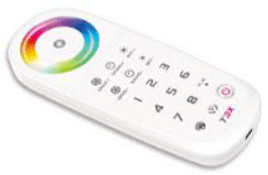Remote controllers have become an indispensable part of our daily lives. From changing TV channels to operating smart home devices, these devices offer us convenience and control at our fingertips. Over the years, remote controllers have evolved, and one of the latest advancements in this technology is the advent of Wi-Fi controllers. In this article, we will explore the world of remote controllers and dive into the fascinating features and benefits of Wi-Fi controllers.
Get our products: Remote Controllers & Wi-Fi Controllers
Remote Controllers & Wi-Fi Controllers
What are Remote Controllers?
Remote controllers, also known as remotes or remote controls, are handheld devices that allow users to wirelessly operate various electronic devices from a distance. They eliminate the need for manual operation, enabling users to control devices conveniently from their preferred locations. Remote controllers use different technologies to transmit commands to the target devices, such as infrared (IR) or radio frequency (RF). In recent years, Wi-Fi controllers have gained popularity due to their advanced functionality and connectivity options.
Types of Remote Controllers
Infrared (IR) Remote Controllers
IR remote controllers are the most common type of remote controllers found in households. They use infrared light signals to communicate with devices. When a button is pressed on the remote, an IR signal is emitted, which is received by a sensor on the target device. IR remote controllers require a direct line of sight between the remote and the device for effective communication.
Radio Frequency (RF) Remote Controllers
RF remote controllers use radio waves instead of infrared signals to control devices. Unlike IR remote controllers, RF controllers do not require a direct line of sight and can operate devices from another room or through walls. RF remote controllers are commonly used for home theater systems, where devices may be located in different areas.
Wi-Fi Controllers
Wi-Fi controllers are the latest addition to the world of remote controllers. These controllers connect to a home’s Wi-Fi network, allowing users to control devices remotely using their smartphones or other smart devices. Wi-Fi controllers offer a wide range of features and advanced functionalities, making them a popular choice for smart homes.
Benefits of Remote Controllers
Convenience and Ease of Use
Remote controllers provide convenience by allowing users to operate devices without physically interacting with them. Whether it’s adjusting the volume on the TV, changing the temperature on the thermostat, or controlling the lights in a room, remote controllers offer ease of use and simplify our interaction with electronic devices.
Enhanced Functionality
Remote controllers, especially Wi-Fi controllers, provide enhanced functionality compared to traditional IR or RF remotes. With Wi-Fi controllers, users can access advanced features and settings of their devices through dedicated mobile apps. These apps often offer additional customization options and settings that can enhance the overall user experience.
Improved Energy Efficiency
Remote controllers contribute to improved energy efficiency by enabling users to conveniently turn off devices when not in use. With the ability to control multiple devices from a single remote, users can easily power down electronic devices, reducing unnecessary energy consumption and lowering utility bills.
How Wi-Fi Controllers Work
Wi-Fi controllers rely on the existing Wi-Fi network in a home to establish a connection between the controller and the target devices. Once connected, users can control their devices using a mobile app or a web interface. The Wi-Fi controller acts as a hub, allowing users to access and control multiple devices simultaneously.
Advantages of Wi-Fi Controllers
Remote Access and Control
One of the primary advantages of Wi-Fi controllers is the ability to access and control devices remotely. Whether you’re at work, on vacation, or simply in another room, you can use your smartphone or tablet to control your devices from anywhere with an internet connection. This level of convenience and flexibility is particularly useful for managing smart home devices when you’re away from home.
Integration with Smart Home Systems
Wi-Fi controllers seamlessly integrate with smart home systems, allowing users to control all their devices from a single platform. Through the mobile app, users can create schedules, automate routines, and even set up voice control using virtual assistants like Amazon Alexa or Google Assistant. This integration simplifies the management of a smart home and offers a cohesive user experience.
Advanced Features and Customization Options
Wi-Fi controllers often come with a range of advanced features and customization options. These may include the ability to create scenes or presets for different situations, such as movie night or bedtime mode. Users can also adjust settings like brightness, color temperature, or fan speed directly from the app, providing a personalized and tailored experience.
Popular Wi-Fi Controllers on the Market
Several brands offer Wi-Fi controllers with various features and compatibility options. Let’s take a look at some popular Wi-Fi controllers available:
Brand A Wi-Fi Controller
Brand A’s Wi-Fi controller offers seamless integration with their line of smart home devices. It allows users to control lights, switches, thermostats, and other compatible devices through a user-friendly app. The controller supports voice commands and provides advanced scheduling options for automated control.
Brand B Wi-Fi Controller
Brand B’s Wi-Fi controller focuses on energy efficiency and offers detailed energy monitoring features. It provides real-time energy consumption data, allowing users to identify and reduce energy waste. The controller also supports integration with third-party platforms and offers extensive compatibility with a wide range of devices.
Brand C Wi-Fi Controller
Brand C’s Wi-Fi controller stands out for its sleek design and intuitive user interface. The app offers a user-friendly dashboard that allows easy control of connected devices. The controller supports geolocation-based automation, ensuring that devices respond to users’ presence and adjust accordingly.
Factors to Consider When Choosing a Wi-Fi Controller
When selecting a Wi-Fi controller for your smart home, it’s important to consider several factors:
Compatibility
Ensure that the Wi-Fi controller you choose is compatible with the devices you want to control. Check if it supports the specific brands and models of your smart home devices to avoid compatibility issues.
User-Friendly Interface
Look for a Wi-Fi controller with an intuitive and user-friendly interface. The mobile app or web interface should be easy to navigate and understand, allowing you to effortlessly control and manage your devices.
Energy Efficiency
Consider a Wi-Fi controller that promotes energy efficiency. Look for features like energy monitoring, scheduling options, and power-saving modes that can help optimize energy usage in your home.
Integration with Smart Home Devices
If you already have a smart home ecosystem with devices from various brands, choose a Wi-Fi controller that offers seamless integration. Compatibility with popular smart home platforms and support for virtual assistants can enhance the overall automation and control of your smart devices.
Tips for Setting Up and Using Wi-Fi Controllers
Here are some tips to ensure a smooth setup and optimal use of your Wi-Fi controller:
Connect to a Stable Wi-Fi Network
Ensure that your Wi-Fi controller is connected to a stable and reliable Wi-Fi network. A weak or intermittent connection may lead to communication issues and unreliable control of your devices.
Follow the Manufacturer’s Instructions
Carefully follow the manufacturer’s instructions during the setup process. Each Wi-Fi controller may have specific setup requirements, and following the instructions will ensure a successful installation and configuration.
Explore Customization Options
Take the time to explore the customization options provided by the Wi-Fi controller’s mobile app or web interface. Experiment with different settings, scenes, and automation features to personalize your smart home experience according to your preferences.
Conclusion
Remote controllers have come a long way, and Wi-Fi controllers represent the future of remote control technology. With their ability to provide remote access, seamless integration, and advanced features, Wi-Fi controllers offer an unparalleled level of convenience and control for smart homes. By choosing the right Wi-Fi controller and following the setup tips, you can unlock the full potential of your smart devices and enjoy a more connected and automated living experience.
FAQs
Are Wi-Fi controllers compatible with all electronic devices?
Wi-Fi controllers may have varying degrees of compatibility with different electronic devices. It’s essential to check the compatibility list provided by the manufacturer before purchasing a Wi-Fi controller.
Can I control multiple devices simultaneously using a Wi-Fi controller?
Yes, most Wi-Fi controllers allow you to control multiple devices simultaneously through their mobile apps or web interfaces. This feature enhances convenience and simplifies the management of your smart home devices.
Is it difficult to set up a Wi-Fi controller?
The setup process for Wi-Fi controllers varies depending on the brand and model. However, most manufacturers provide clear instructions and user-friendly setup procedures to make the process as straightforward as possible.
Can I use a Wi-Fi controller outside my home network?
In most cases, Wi-Fi controllers are designed to work within your home network. However, some manufacturers offer additional features, such as remote access through cloud services, which allow control of your devices from anywhere with an internet connection.
Do all brands offer regular firmware updates for their Wi-Fi controllers?
Firmware updates depend on the manufacturer. It’s advisable to choose a reputable brand that actively supports its products with regular firmware updates, as they often bring bug fixes, security enhancements, and new features to improve the performance and functionality of the Wi-Fi controller.



Recent Comments